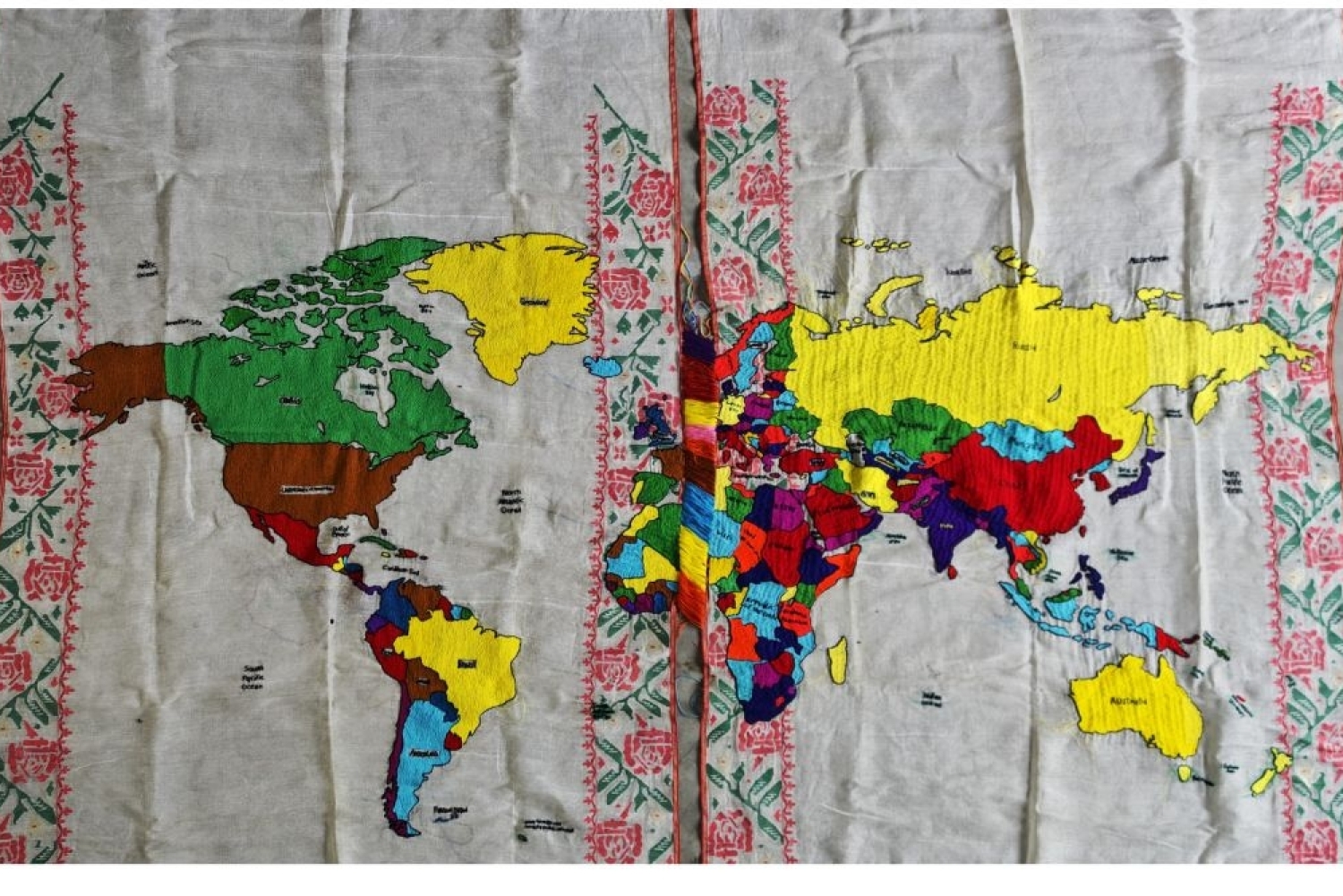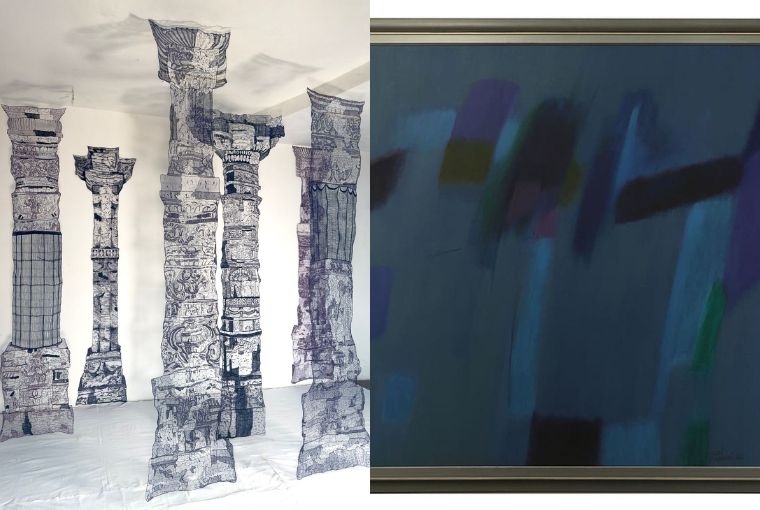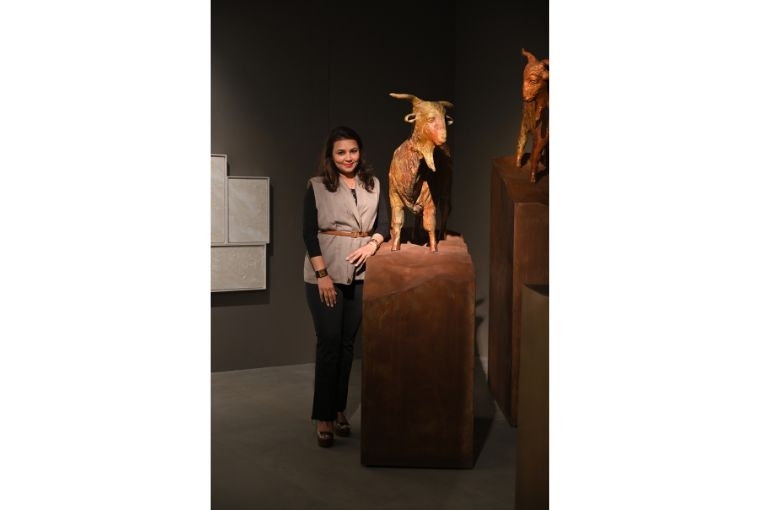
Crossing the Border, Being Together by Yasmin

Crossing the Border, Being Together by Yasmin
Marking 15 years of Exhibit 320, founder and curator, Rasika Kajaria spoke to us about her journey from creating a space for experimental art in India to shaping a globally engaged platform known for material exploration, conceptual depth, and inclusivity. As the gallery steps into its next chapter, with residencies, research, and cross-cultural collaborations, it reaffirms its role as a catalyst for dialogue, experimentation, and meaningful engagement with contemporary issues. We're in conversation with the founder, Rasika Kajaria.
15 years of creating and curating art. Do you remember how it all started?
I started Exhibit 320 in 2009 with the vision of creating a space that could both nurture and challenge contemporary artistic practices in India. At the time, there were limited platforms for experimental, process-driven work, and I wanted to bridge that gap. The idea was to bring together diverse voices—emerging and established—and to create a dialogue between tradition and contemporary thought. Those early years were about building relationships with artists, understanding their processes, and creating exhibitions that could travel across disciplines and audiences.
How has your understanding and appreciation of art transformed over the years, and what influences have contributed to this evolution?
Over the years, my relationship with art has deepened from being purely aesthetic to understanding it as a layered intersection of materiality, politics, culture, and lived experience. Early on, I was drawn primarily to visual beauty and technical mastery. But working closely with artists has shown me the courage, vulnerability, and social engagement embedded in their practice. Travelling to biennales, engaging with global curators, and witnessing how art responds to socio-political realities have all shaped my approach. Today, I appreciate art not only for how it looks, but for the questions it asks and the conversations it sparks.

Searching Home series by Kaushik Shaha
For the monumental exhibition that celebrated 15 years of your gallery, what were the conversations you had with the curator, Deeksha as to what this show should stand for?
Deeksha and I wanted this exhibition to be a celebration of 15 years of shared journeys—with artists, collaborators, and audiences. From the start, our conversations centred on multiplicity: bringing together works that span generations, geographies, and mediums, yet remain in dialogue. We wanted the show to reflect the gallery’s ethos of material exploration, conceptual depth, and inclusivity. It’s as much a retrospective of our past collaborations as it is a statement of where we are headed—rooted in experimentation, open to diverse voices, and responsive to the times we live in.
What types of art gravitates you personally, and how do those preferences influence the exhibitions you curate?
I’m drawn to work that is layered, where the more you look, the more it reveals itself. I gravitate towards strong material sensibilities, meticulous craftsmanship, and ideas that are not afraid to take risks. My personal preference for detail, narrative, and process naturally informs the exhibitions at Exhibit 320. While I remain open to diverse artistic languages, I believe that when a curator genuinely connects with a work, that sincerity translates into the way it’s presented to audiences
As you celebrate this milestone, what are your aspirations for the next chapter of Exhibit 320?
The next chapter is about deepening our commitment to artists—expanding beyond exhibitions to include more residencies, research-led projects, and cross-cultural collaborations. I want Exhibit 320 to continue being a space where artists feel supported to experiment, and where audiences can engage meaningfully with contemporary art. We’re also looking to strengthen our presence globally, creating opportunities for our artists to participate in international platforms and fostering dialogues that transcend borders.

L-R: Monuments, Variable, Thread 2025; Blue Rhythm by Gopi Gajwani
How do you see the role of contemporary art in addressing social issues today, and how does Exhibit 320 aim to facilitate those conversations through its exhibitions?
Contemporary art has the power to hold a mirror to society, to question norms, and to humanise complex issues. Whether it’s gender, environment, migration, or identity, artists can make these subjects tangible and urgent in ways statistics cannot. At Exhibit 320, we’ve always encouraged artists to engage with their contexts—be it through installations that address environmental degradation, works exploring caste and gender, or pieces reflecting on urban change. Our role as a gallery is to give those voices space, to contextualise them for audiences, and to ensure that art remains a living, responsive force in our cultural fabric.
Words Hansika Lohani
Date 15.8.2025

Founder, Rasika Kajaria